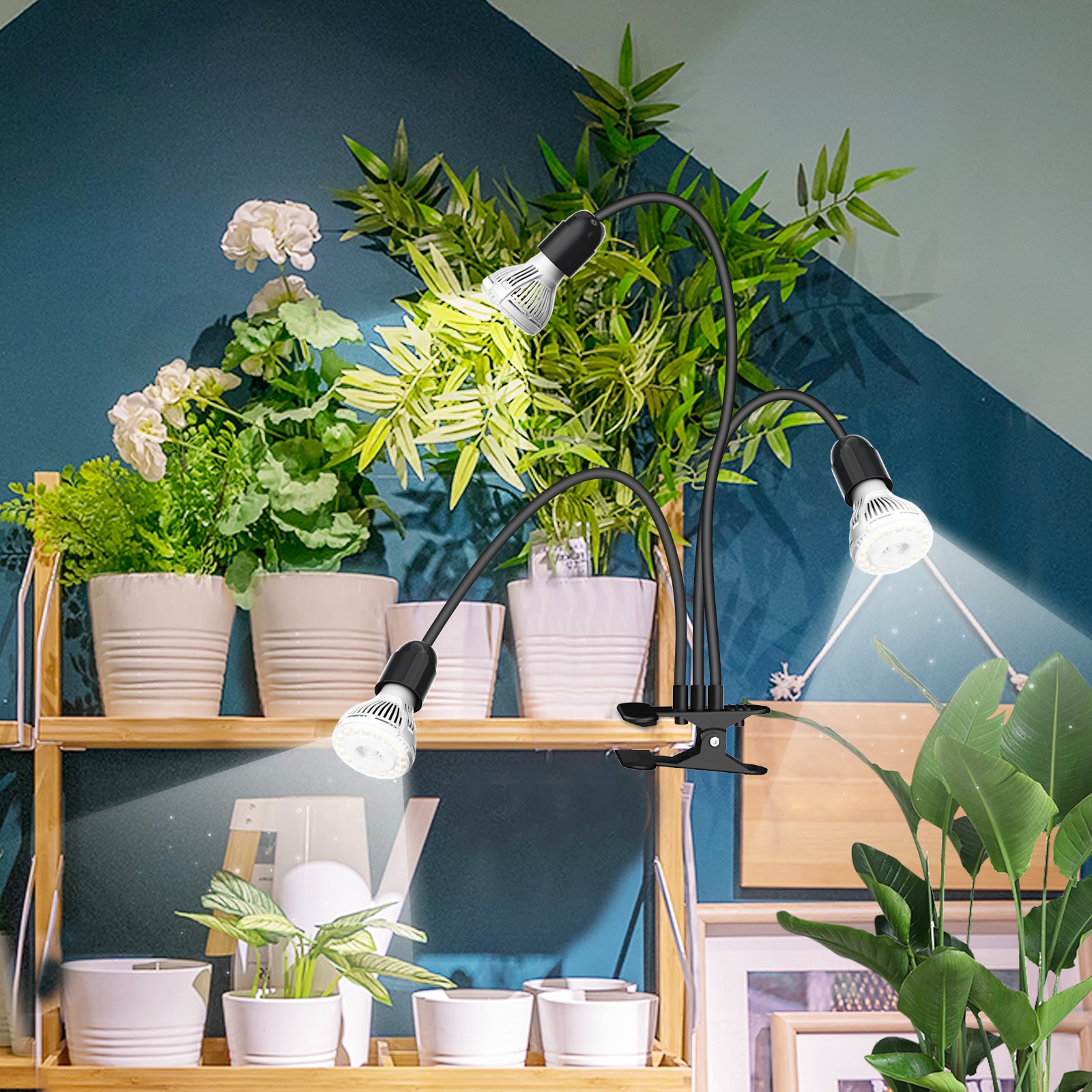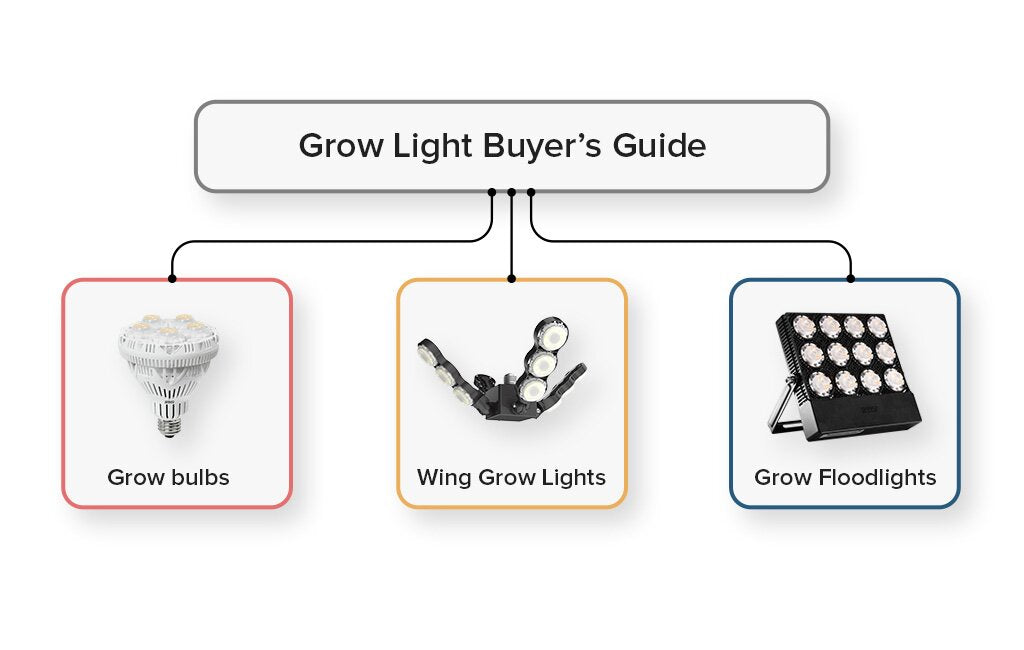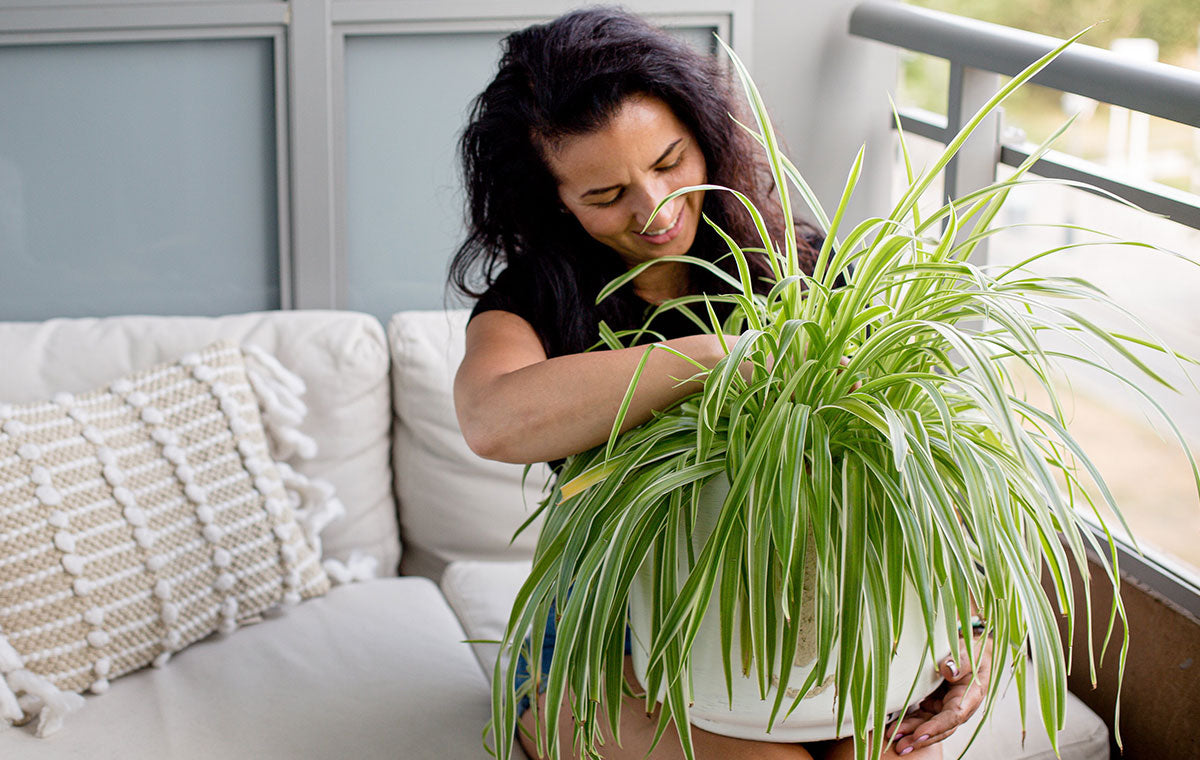It is well known that natural sunlight is the best source or plant growth and development. However, throughout the winter months or trying to stimulate faster or more well-rounded growth, the application of supplemental blue and red light may be beneficial to indoor plants. With the recent advancements in RED and Blue LED grow lights, it is now possible to supplement indoor or table plants with red and blue light using customized controls in small spaces. Let’s take a look at what red and blue light does for plants, and how they can benefit your crops as a supplement.
What Does Red Light Do For Plants?

Red light between 620-700nm in wavelength is very effective in increasing the size and weight of fruits, flowers etc. Red light’s main function for plants is that it enhances photosynthesis, promoting growth, resulting in larger heavier plants. When is red light suitable to be used on plants? Due to the absorption rate of red light, it can be used throughout all stages of a plant’s life cycle. However, just applying red light will not result in a healthier bigger plant, it does need to be used in combination with all the other light spectrums to promote the best development.
When to Use Red Supplemental Light?

Red lighting can be applied through various scenarios, for the sake of this blog we will outline the 3 most common. Outdoor sunlight, supplemental lighting and boosting yields.
Natural Red Light-Within outdoor natural sunlight, the red ratio is very high. Full-spectrum sunlight contains a high amount of red light. Meaning it has the effect of stimulating chlorophyll B production as well as fruiting, flowering and speeding up photosynthesis. General outdoor plants will receive a fair amount of red light to grow healthily.
Artificial Supplementation- The northern hemisphere with its darker days and lower light levels, plant’s size and weight may be reduced. Requiring higher red light in combination with a full spectrum beam in order to stimulate more growth. Artificial red light before has been only placed as overhead lighting, resulting in uneven growth. Leading to a recent trend in intrafamily supplemental lighting in medium to large scale grow. The introduction of red light into plants that are already receiving full spectrum light in studies has shown to increase tomato and cabbage biomass.
Artificial Red/Blue light Manipulation- This is mainly for commercial grows, where the yield needs to be maximized under an optimal time schedule. This may be where red, blue and purple light are all mixed and set to specific time schedules in order to speed optimize the growth of plants. Red and blue light may be scheduled intensely as overhead and interplant supplementation in order to boost yields of indoor fruits, vegetables or herbs. Commercially maximizing yields under artificial lights requires very specific lighting requirements subject to each plant, so for most houseplants or enthusiasts most likely is not completely necessary, although it can be done.
What Does Blue Light Do?
Blue light, although not as efficient as red light for plants, it is still very effective in chlorophyll production and promoting plant development. Red and blue light used in combination can result in a very healthy plant. Generally, plants want a fair bit of blue light exposure as it promotes stomatal openings which allows more CO2 into the leaves. Creating larger healthier stems and leaves. The absorption of chlorophyll and photosynthesis that blue light promotes, makes it important for plants in the seedling and vegetative phase so they get strong roots and stems.
The Best Way to Use Red and Blue Light?

When using red and blue light you need to find the optimal ratio for your plant and their growth phase. In general, the red to blue ratio will come down to what you’re trying to do to the plant. If you’re looking for promoting weight and flowering/fruiting, a higher red to blue ratio would be better and if your growing leafy vegetables or need a stronger stem for your plants a higher blue ratio would be better.
The best way to optimize an indoor grow using blue and red spectrums is to have customizable controls, whereby you can dictate the amount of red and blue light to the plant through each phase. This would improve the health, size and overall yield of the plant and decrease the production time. These types of adjustable controls allow indoor grows to be higher quality and cheaper.
What is the Most Suitable Blue/Red Indoor Light?

SANSI’s 24W is the best small scale customizable Blue & Red on the current market. Being a desk clip on option offering 3 different timing schedules, memory function and offering multiple blue/re ratios. For the 3 headed simple indoor grow light, it is the most optimal way to boost your indoor yields.
It offers dimming options, various Blue: Red Ratios, making it easily adjustable around your houseplant’s growth pattern. It can be used as an overhead or interplant supplemental light for the lower canopy, providing light to even the forgotten areas of plants.
SANSI’s 24W Grow light allows uses its customizability and simple set up to be able to provide indoor house plants blue and red light in order to increase yields. When looking to increase and improve indoor crops, this supplemental light would be a great addition to adding significant percentages to your plants weight, size and reduction in harvesting time!
Also we can learn the full spectrum light, full spectrum means all colors (but means much more than just color named Electromagnetic spectrum) produced from natural light and a term used for grow lights.
Full-spectrum grow lights are the closest to real sunlight and will help your plants grow the best. Natural sunlight emits all spectrums of light, even ultraviolet and infrared, which aren’t visible to the naked eye. If you want the led light bulb become decor and let the planting be more easier, you can also choose full spectrum light with natural light.
Enter to learn more full spectrum led grow light bulbs.
Halloween Sale
Looking for more growing knowledge? Click these blogs:
Full Guide – How to Choose the Right LED Grow Light for Indoor Plants
How Can A Full Spectrum Grow Light Affect Your Plants Grow?







Leave a comment
All comments are moderated before being published.
This site is protected by hCaptcha and the hCaptcha Privacy Policy and Terms of Service apply.